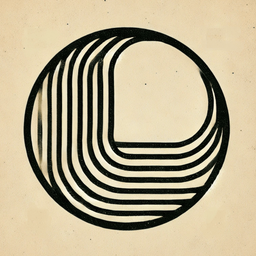Vomit Journaling for Anxiety: 9 Transformative Techniques Inspired by Campbell Walker’s Method
Struggling with anxiety, overthinking, or a life that feels chaotic? This article walks you through 9 actionable journaling techniques—from mind-dumps to habit audits—built on proven research and real lived experience from the creator of VOMIT Journaling, Campbell Walker.

Before Journaling Saved My Life
In 2009, Campbell Walker was 18, and his life was falling apart.
A suicide attempt, a bipolar diagnosis, parents divorcing, financial collapse, drug addiction—I was done. I’d lost friends, weight, and purpose. One night, high and hollow, I sat at my computer and typed everything I was thinking. Every fear. Every thought. Every shameful memory.
When I finished, I looked at the page—and for the first time, my thoughts didn’t look as terrifying as they felt. The chaos had form.
The noise stopped for two days.
That’s when I realized: journaling isn’t a hobby. It’s a mental health technology.
Twelve years later, I’ve filled hundreds of notebooks and built a life around clarity instead of chaos.
Below are the nine methods that changed him—and might change you too.
1. Journaling for Clarity: The Mental “Mind Dump”
Purpose: To quiet racing thoughts and see your mind objectively.
Best for: Overthinking, stress, and burnout.
How to Do It
- Set a timer for 10–15 minutes.
- Write every thought as it appears, unfiltered: worries, to-dos, confessions.
- No grammar. No editing. Just continuous writing.
- Stop when your mind feels lighter.
Why It Works
Cognitive research from UCLA shows that labeling emotions reduces amygdala activity (the brain’s fear center). Writing slows down thought speed, turning chaos into language—and language into clarity.
2. Journaling to Break Mental Loops
Purpose: To escape obsessive thought cycles.
Best for: Anxiety, self-criticism, fixation.
When you’re stuck replaying something, your brain is craving novelty and perspective. Try one of these quick reset exercises:
- Imagine Six Impossible Things
Inspired by Lewis Carroll. Write absurd, whimsical ideas (“A camel ice-skating on the moon”). Play breaks pattern loops. - Serve Someone Else
Ask: How can I make one person happier right now?
Text a friend, send a meme, compliment a stranger. You shift from self-focus to outward connection—a proven anxiety reducer. - Notice the Unnoticed
Ask: What’s something in my environment I’ve never seen before?
This grounds you in the present moment, pulling you out of the mental movie in your head.
🧠 Why it works: These pattern interrupts re-engage your prefrontal cortex—the part of your brain responsible for perspective and logic.
3. Journaling for Daily Reflection
Purpose: To track your emotional energy and spot hidden patterns.
Best for: Self-awareness, gratitude, emotional regulation.
Write five prompts at the end of each day:
- What excited me today?
- What drained my energy?
- What did I learn?
- What am I grateful for? (List 10.)
- How did I move the needle forward?
Why It Works
Psychologist Sonja Lyubomirsky found that gratitude journaling increases long-term happiness by up to 25%.
Over time, you’ll see clear trends. For me, “What drained my energy?” revealed the same culprits—alcohol and social media. Once it’s on paper, the truth becomes undeniable.
🪞 Try this: Circle any answer that repeats for three days in a row. That’s your next growth edge.
4. Journaling for Habits & Lifestyle Audit
Purpose: To measure progress and hold yourself accountable.
Best for: People in growth mode—building habits, breaking addictions, or leveling up.
Setup
Divide your page into three columns:
| Action | Worst Self | Best Self |
|---|---|---|
| Drank 10 beers | -1 | |
| Went for a run | +1 | |
| Scrolled 2 hours | -1 | |
| Wrote for 1 hour | +1 |
At the end of the day, tally your points. Which side is winning—your best self or your worst?
Why It Works
Behavioral psychology shows that self-tracking boosts habit change through awareness alone. You don’t change what you don’t measure.
⚙️ Tip: Don’t use this for self-punishment. It’s a mirror, not a whip. The goal is honest feedback, not guilt.
5. Journaling for When Bad Things Happen
Purpose: To process pain without spiraling.
Best for: Breakups, loss, failure, setbacks.
When life hits sideways, ask yourself:
- What happened—objectively?
- What story am I telling myself about it?
- How would I comfort a friend if this happened to them?
- How could this be the best thing that’s ever happened to me?
That last question—borrowed from Tom Bilyeu—flips victimhood into growth.
It doesn’t deny pain; it extracts meaning.
💬 Example: “Losing that job forced me to finally build my own thing.”
Hamlet was right: “There is nothing either good or bad, but thinking makes it so.”
6. Journaling for Anxiety Relief
Purpose: To dissect anxiety into solvable parts.
Best for: Fear, catastrophizing, social anxiety.
Draw three columns:
Fears | Fixes | Outcome I’d Bet On
Example:
| Fears | Fixes | Outcome I'd Bet On |
|---|---|---|
| People will hate my art | Disable comments until I’ve posted 20 pieces | Some will like it; I’ll improve |
| Partner might crash car | Acknowledge thought; text “Drive safe, love you” | She’ll get home fine |
Why It Works
When you break anxiety into specifics, you convert vague fear into actionable data.
The “Outcome I’d Bet On” column retrains your brain to forecast realism instead of doom.
🧘 Remember: No amount of rehearsing tragedy will prepare you for it. Let it go.
7. Journaling for To-Do Lists & Direction
Purpose: To reduce overwhelm and focus on what matters.
Best for: Ambitious overthinkers juggling too much.
Start by dumping everything you “should” do. Then refine using these filters:
- What is non-negotiable?
- What feels exciting, not just expected?
- What 20% of actions create 80% of my results? (Pareto Principle)
- What, if removed, would I fight to get back? (Tim Ferriss)
The list that remains isn’t your workload—it’s your roadmap.
🗂️ Bonus: Use highlighters. Green for joy, red for obligation. Aim to turn reds into greens.
8. Journaling for Decision-Making
Purpose: To stop looping and start choosing.
Best for: Life crossroads—career, relationships, creative projects.
Framework
- Define the problem clearly: “I don’t know whether to move to X city.”
- List all possible options.
- Ask: Are they mutually exclusive?
- Set a 60-second timer: If I had to decide now, what would I choose?
- Ask: Could I live with that outcome?
- Finally: What would this look like if it were easy?
Why It Works
Analysis paralysis is often fear disguised as logic. Deadlines activate intuition.
When you trust your gut—and then verify it on paper—you blend emotion with reason.
🎯 Tip: The best decisions come from clear thinking, not perfect certainty.
9. Journaling for Life Direction
Purpose: To rediscover purpose and long-term alignment.
Best for: Transitions, burnout, identity loss.
Visualize your life as a graph—each desire a point on the chart.
To find direction, you need more than one point.
Ask:
- What did I want 5 years ago?
- What do I want right now?
- What do I think I’ll want 5 years from now?
- If I knew I couldn’t fail, what would I do?
Now connect those points. That’s your trajectory.
🌅 Why It Works: Most people mistake confusion for lack of clarity, but it’s really lack of reflection. Journaling connects dots across time.
How to Make Journaling a Habit
- Keep it simple. Cheap notebook, one pen, zero pressure.
- Anchor it. Link journaling to a routine—morning coffee or bedtime.
- Write badly. Clarity comes after chaos.
- Review weekly. Look for patterns, progress, or repeated mistakes.
- Pair it with calm. Breathwork, a walk, or tea after writing helps regulate emotions.
If emotions feel overwhelming, that’s not failure—it’s progress. But if trauma surfaces, combine journaling with therapy.
Life Note: A Modern Tool for Ancient Healing
Journaling is timeless — the above methods make it practical; Life Note makes it personal.
With Life Note, you can journal with curated prompt library and even create your own prompt library— while receiving letters from history’s greatest minds like Marcus Aurelius, Maya Angelou, or Carl Jung. Each mentor helps you vent with honesty, reframe your mindset, and track your trajectory — turning raw reflection into daily growth.
"I've encouraged clients and students for decades to keep journals as one of the best tools for self-awareness. When AI journaling apps began appearing, I tried several. Most gave sycophantic responses. That changed when I found Life Note. It strikes a rare balance - offering support with gentle nudges and thoughtful invitations to reflect. Having the voices of luminaries from different fields comment on my writing has been a game changer - deepening the experience and helping me gain insights beyond my own words. I'm genuinely excited about the future of Life Note, and I see AI journaling not as a replacement for therapy, but as a powerful tool to complement it."
— Sergio Rodriguez Castillo, Licensed Therapist & College Professor
Start your first journaling session today at mylifenote.ai and experience the blend of ancient reflection and modern neuroscience.
Frequently Asked Questions About Vomit Journaling
1. What is Vomit Journaling?
Vomit journaling is a raw, unfiltered style of writing where you dump every thought in your head onto the page—without editing, censoring, or worrying about structure. It’s called “vomit” journaling because the goal is to purge mental clutter. You write until your thoughts stop racing and your mind feels lighter.
2. How is Vomit Journaling different from normal journaling?
Traditional journaling focuses on reflection or gratitude. Vomit journaling focuses on release. You’re not trying to make sense of your thoughts—you’re just getting them out. Once you externalize them, the emotional intensity drops. It’s like clearing your mental inbox before real insight can emerge.
3. What are the benefits of Vomit Journaling?
- Reduces anxiety and overthinking
- Helps process difficult emotions safely
- Improves clarity and focus
- Creates space for creative and rational thinking
- Supports emotional regulation and self-awareness
Neuroscientific studies show that labeling emotions in writing lowers activity in the brain’s amygdala—the center of fear and stress—making you calmer and more objective.
4. Can Vomit Journaling trigger difficult emotions?
Yes—it can surface suppressed feelings. That’s part of the healing.
If strong emotions arise, pause, breathe, and ground yourself before continuing. Combine vomit journaling with mindfulness, walks, or breathwork to regulate your nervous system.
If the emotions feel overwhelming or linked to trauma, it’s best to work with a licensed therapist.
5. Can Vomit Journaling help with anxiety and depression?
Yes. Studies on expressive writing show significant reductions in anxiety, depressive symptoms, and rumination. By translating emotional chaos into language, you weaken its hold. You learn to see your thoughts as content, not commands.
Closing Thoughts: You’re the Author, Not the Story
Every journal entry is a micro-moment of reclaiming control.
You’re not documenting life—you’re directing it.
Writing doesn’t just describe what happened. It changes what happens next.
So grab a notebook tonight.
Not to fix yourself.
But to listen—to the part of you that’s been waiting to speak.
Explore More




